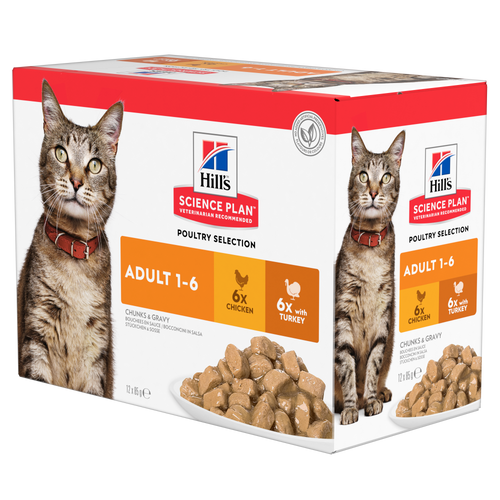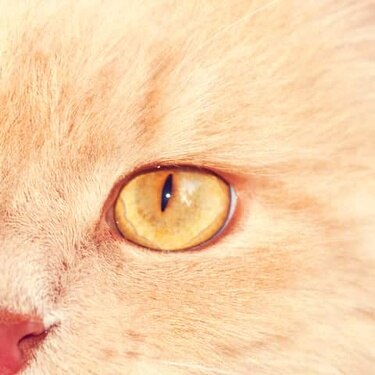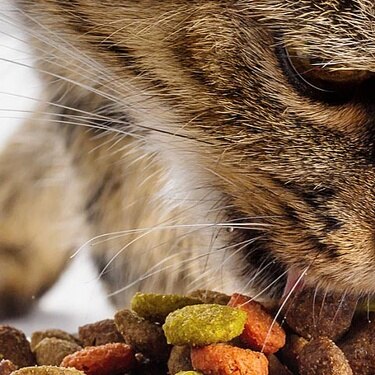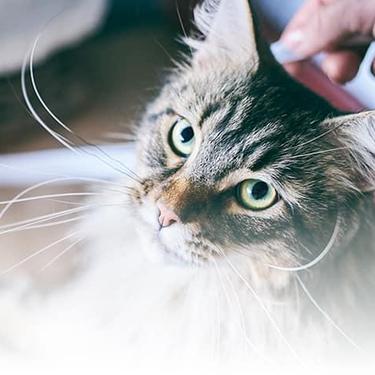
-
Find the right food for your petTake this quiz to see which food may be the best for your furry friend.Find the right food for your petTake this quiz to see which food may be the best for your furry friend.Featured products
 Mature Adult Dog Food
Mature Adult Dog FoodHill's Science Plan Mature Adult Multipack Wet Dog Food with Chicken & Beef are complete premium pet foods for mature adult dogs from 7 years. Your dog will love these deliciously smooth and savoury minced loaves, formulated to deliver the appropriate amount of energy to support the needs of adult dogs.
Shop Now Puppy Food
Puppy FoodHill's Science Plan Puppy Multipack Wet Dog Food with Chicken & Beef are complete premium pet foods for growing puppies from weaning until 1 year old and for pregnant and nursing dogs. Your puppy will love these deliciously smooth and savoury minced loaves, formulated for balanced nutrition and overall health.
Shop Now Adult Wet Dog Food with Beef
Adult Wet Dog Food with BeefHill's Science Plan Adult Multipack Wet Dog Food with Chicken, Beef & Turkey are complete premium pet foods for adult dogs from 1 year. Your dog will love these deliciously smooth and savoury minced loaves, formulated for balanced nutrition and overall health.
Shop NowFeatured products Light Adult Multipack Wet Cat Food with Chicken & Ocean Fish
Light Adult Multipack Wet Cat Food with Chicken & Ocean FishTender chicken chunks in gravy for cats, with L-carnitine and fewer calories for ideal weight management. Packed with high-quality protein, omega-6s, and vitamin E for shiny fur and healthy skin.
Shop Now Mature Adult Wet Cat Food with Chicken
Mature Adult Wet Cat Food with Chicken
Tender chicken chunks in gravy for mature adult cats. Made with easy-to-digest ingredients, high-quality protein for lean muscle maintenance and antioxidant vitamins C+E for optimal health.
Shop Now Adult Multipack Wet Cat Food with Beef, Ocean Fish & Chicken
Adult Multipack Wet Cat Food with Beef, Ocean Fish & ChickenTender chunks in gravy for cats, with high-quality protein to maintain lean muscle. With vitamin E and omega-3s & -6s for healthy skin and balanced minerals to support healthy vital organs.
Shop Now -
Dog
- Dog Tips & Articles
-
Health Category
- Weight
- Food & Environmental Sensitivities
- Urinary
- Digestive
- Joint
- Kidney
-
Life Stage
- Puppy Nutrition
- Adult Nutrition
- Senior Nutrition
Cat- Cat Tips & Articles
-
Health Category
- Weight
- Skin & Food Sensitivities
- Urinary
- Digestive
- Kidney
-
Life Stage
- Kitten Nutrition
- Adult Nutrition
Featured articles The Incredible Science Behind Your Pet's Microbiome
The Incredible Science Behind Your Pet's MicrobiomeLearn what your pet's microbiome is, how it contributes to your pet's gut and overall health, and why nutrition is important in maintaining healthy microbiomes.
Read More The Right Diet For Your Pet
The Right Diet For Your PetIn people, the right diet is very important. If you are eating the wrong way for your metabolism, activity level, age and lifestyle you could end up with health issues.
Read More Show some love with wet foods: a great choice for pets with health issues
Show some love with wet foods: a great choice for pets with health issuesShow some love with wet foods: a great choice for pets with health issues.
Read More -


Cats are good at letting you know when they want something, either vocally or with their bodies. But what exactly is your cat trying to say? Read on to learn more about your cat’s behaviour.
What are cats saying through meows?
As your kitten grows up, their little 'mews' will start to be replaced by more grown-up, distinctive 'meows'. Interestingly, cats have learnt, through domestication, to ‘speak’ to humans. Meows are virtually never directed at other cats, just at humans. So listen up, they’re talking to you!
Low-pitched meows usually mean your cat is uncomfortable or unhappy for some reason. High-pitched, chirpy meows mean they’re happier, and if they keep repeating them, they’re seeking your attention for some reason. Eventually, you'll get to know when your kitten's trying to say “feed me”, “love me” or “I’ve had enough of being stroked now!”

What does purring mean?
Purring is usually a sign of contentment, although this is not always the case. A cat that is ill or anxious will sometimes purr as a way to self soothe. However, most of the time when your kitten is purring loudly while rubbing against you, or sitting on your lap, it's a sign of affection or a request for something, such as food.
Why your cat hisses and growls
If you're hearing these noises, you have one frightened or angry little kitten. These noises are usually accompanied by postures and expressions such as puffing out their fur or pulling back their ears and they’re trying to sound as scary as possible to protect themselves. You'll usually hear them hiss and growl during tense encounters with other animals, however they may also use these sounds to communicate that they are unhappy about something that you are doing to them.


Tasty Tips
Why do cats rub their face on you?
When your cat rubs their face up against you, they’re depositing pheromones from their cheeks as a way to say “Mine!” Pheromones are chemical messages produced all over a cat’s body that can communicate different things, such as possession, alarm, or sexual status. Face rubbing is a good sign, because your kitten is showing that they like you and they’re comfortable in your company.
Cat tail body language
A cat's tail is an excellent indicator of their feelings. A happy kitten will hold their tail straight up, but if they’re frightened, they’ll tuck it between their legs or puff it out.. The broad swishing of an adult cat's tail shows annoyance or impatience. If they’re really agitated, their tail will move rapidly from side to side; this is clearly threatening behaviour. A twitching tail is a sure sign of your kitten's excitement and curiosity. If you’re stroking a cat and their tail starts twitching or flicking from side to side, it’s best to remove your hand as it’s often a sign they’ve had enough. Make sure your children know these signs too, because missing these subtle cat communications often ends up with children being scratched or bitten. Too often the cat gets the blame, when we just didn’t notice what they were trying to tell us.
Your kitten’s ears can also give you clues. Pricked ears are an indication of interest in what's going on around them. If the ears are held erect and inclined forward, they’re feeling relaxed and friendly. But when a cat flattens their ears down against their head, it's a sign of fear or aggression. Sideways ears can also be a sign of tension and alertness.
What it means when your kitten kneads/makes biscuits
It's common to see a cat kneading the space in which they’re about to settle down or when sitting on your lap or chest. This movement indicates contentment and is a throwback to the time when they were suckling from their mother, when they would knead the teat to increase the flow of milk.
Your cat's habits: curiouser and curiouser
There's no doubt that cats have some very curious habits. Have you ever spread a newspaper out on the table and tried to read it with your cat around? They’ll jump onto the table and settle down right in the middle of the paper, daring you to move them! You won't be allowed to substitute anything for that paper, and there will be no tempting them onto a cosy cushion or chair instead. Why? Because by being on that paper, they’ll have your full attention.


One of our staff authors prepared this article for you
Related products


Tender chicken chunks in gravy for mature adult cats. Made with easy-to-digest ingredients, high-quality protein for lean muscle maintenance and antioxidant vitamins C+E for optimal health.

Tender chunks in gravy for cats, with high-quality protein to maintain lean muscle. With vitamin E and omega-3s & -6s for healthy skin and balanced minerals to support healthy vital organs.

Tender chicken chunks in gravy for cats, with L-carnitine and fewer calories for ideal weight management. Packed with high-quality protein, omega-6s, and vitamin E for shiny fur and healthy skin.
Related articles

There are three common ways to feed a cat. Each way has its advantages and disadvantages.

Chocolate is known to be poisonous for dogs, but it can also be toxic for cats. Learn why chocolate is bad for cats & what to do if she's eaten it.

From essential vitamins & minerals to different types of meat, learn what to look for when choosing the best cat food for your feline.

Learn how to make homemade cat treats that are healthy for your pet with this recipe from Hills Pet Nutrition.

Put your cat on a diet without them knowing
Our low calorie formula helps you control your cat's weight. It's packed with high-quality protein for building lean muscles, and made with purposeful ingredients for a flavourful, nutritious meal. Clinically proven antioxidants, Vitamin C+E, help promote a healthy immune system.
Put your cat on a diet without them knowing
Our low calorie formula helps you control your cat's weight. It's packed with high-quality protein for building lean muscles, and made with purposeful ingredients for a flavourful, nutritious meal. Clinically proven antioxidants, Vitamin C+E, help promote a healthy immune system.

